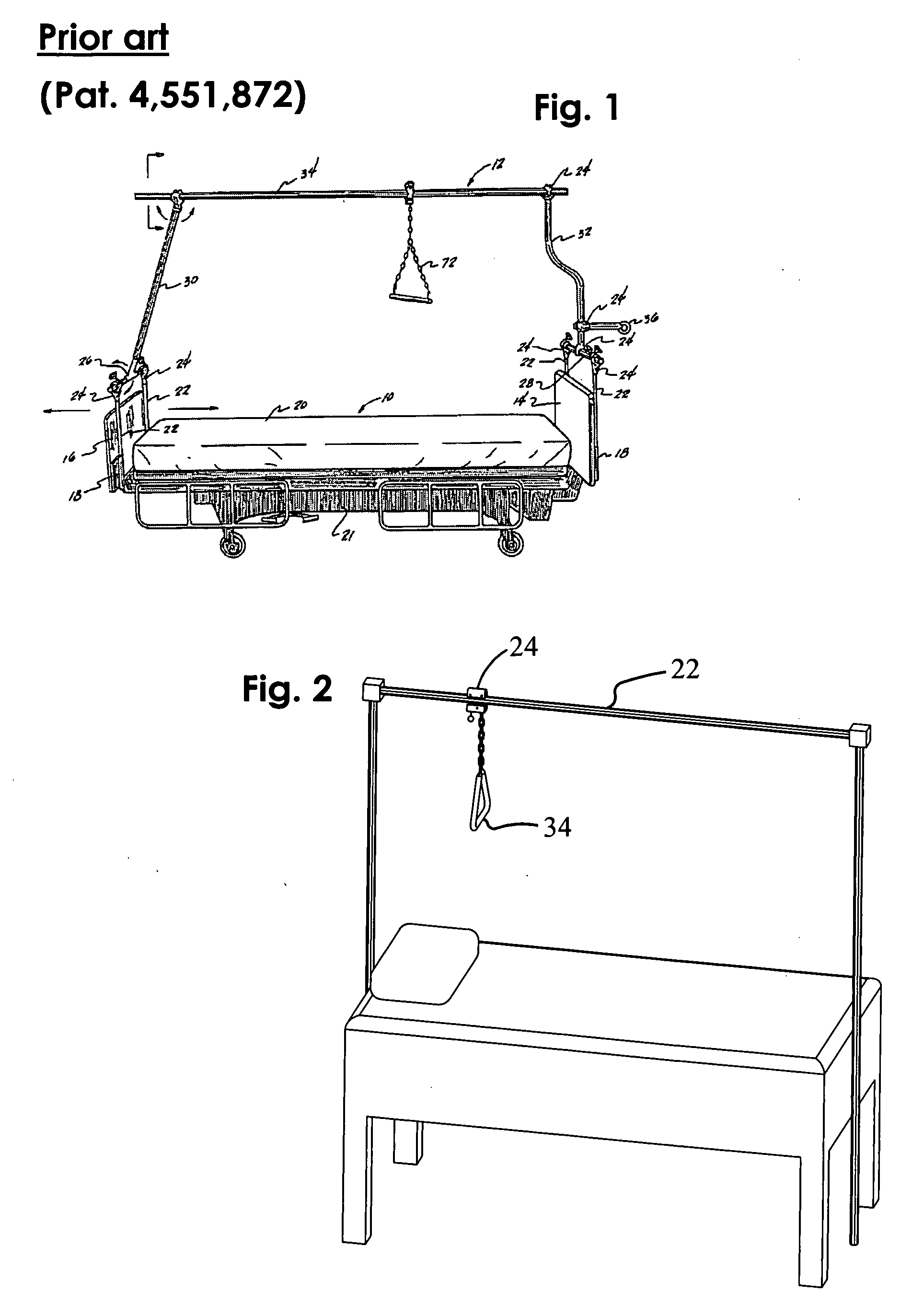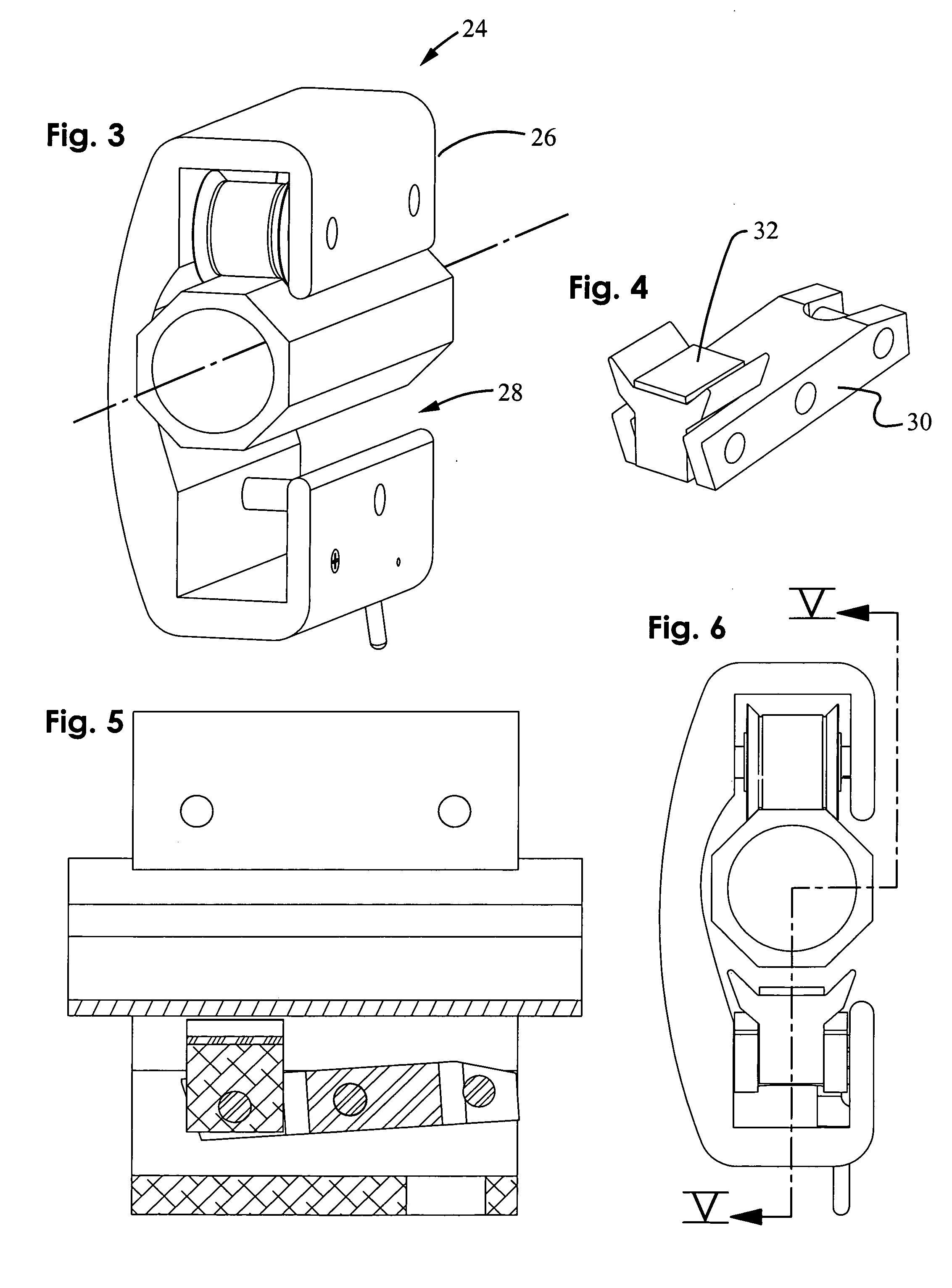Method and apparatus for use by a patient in temporarily lifting that person with respect to a horizontal surface--such as a bed
a technology for lifting a person and a bed is applied in the field of temporary lifting of a person with respect to a horizontal surface, which can solve the problems of patient losing his or her balance, patient being denied the opportunity to make personal adjustments, and he would be out of luck, so as to achieve less likelihood of imposing an extra burden and positive mental attitud
- Summary
- Abstract
- Description
- Claims
- Application Information
AI Technical Summary
Benefits of technology
Problems solved by technology
Method used
Image
Examples
Embodiment Construction
[0031]Referring initially to FIG. 1, a bed and a structural rail of the prior art are shown, and a clamp is shown at a typical position along the rail. Such a clamp is held at the spot selected for it, by virtue of manually tightening a bolt or screw around the rail. If a patient wishes to move himself with respect to the bed, he must either wiggle his body or get someone else to position the clamp in an advantageous location—so that he might benefit from being able to lift himself by pulling downwardly on a trapeze. Of course, the trapeze 20 is shown with a generally horizontal orientation, suspended below a rail 22 as it is typically employed in modern hospitals. Such a rail 22 is octagonal or circular in cross-section and has first and second ends and extends longitudinally over a hospital bed—as shown in U.S. Pat. No. 5,836,026 to Reed. The length of the rail 22 is not important to this invention, but there will be a variety of possible positions for a carriage 24 as it slides a...
PUM
 Login to View More
Login to View More Abstract
Description
Claims
Application Information
 Login to View More
Login to View More - R&D
- Intellectual Property
- Life Sciences
- Materials
- Tech Scout
- Unparalleled Data Quality
- Higher Quality Content
- 60% Fewer Hallucinations
Browse by: Latest US Patents, China's latest patents, Technical Efficacy Thesaurus, Application Domain, Technology Topic, Popular Technical Reports.
© 2025 PatSnap. All rights reserved.Legal|Privacy policy|Modern Slavery Act Transparency Statement|Sitemap|About US| Contact US: help@patsnap.com



